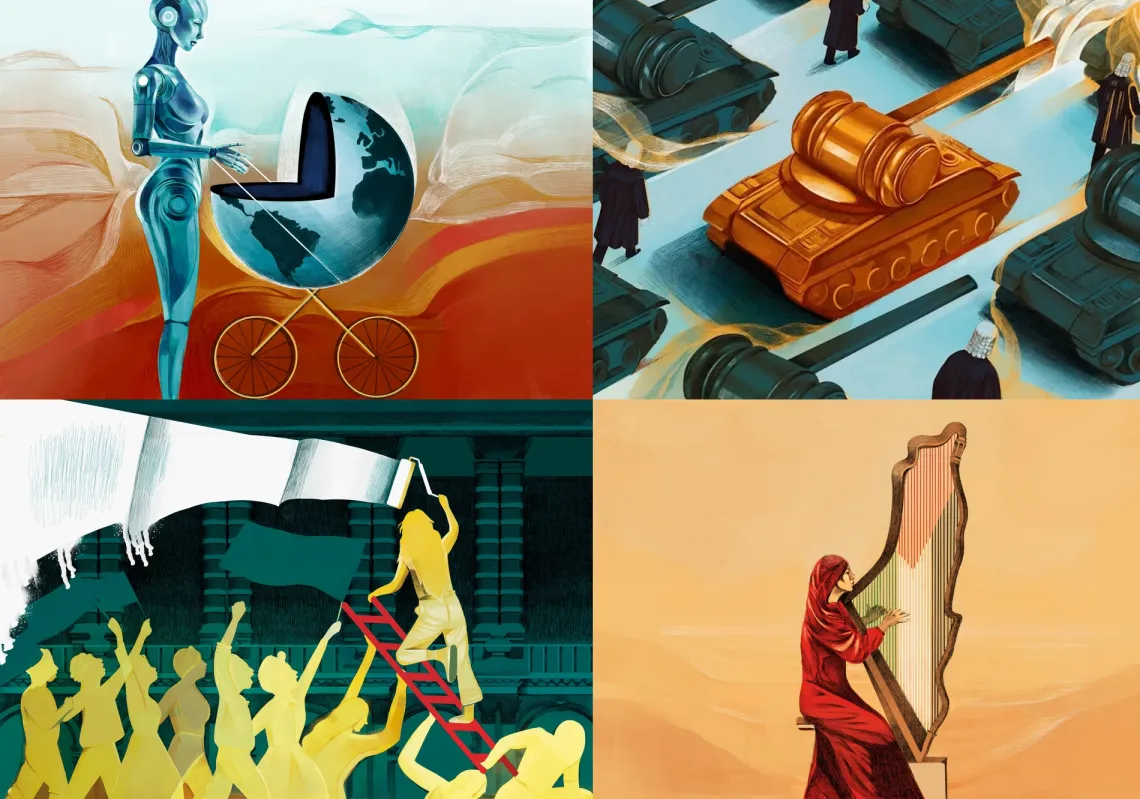
Meeting the future head-on
Lucan maintains that intelligence has nothing to do with the desire for dominance, saying: "If it were true that the most intelligent people want to control others, Albert Einstein and other scientists would have been rich and powerful, but they were not."
As a highly regarded and trusted scientist in the AI field, he thinks the superiority of machine intelligence can help humanity tackle some of its most significant challenges, including climate change and the treatment of diseases. He is excited by the prospect because he sees it as being under human control.
There are other challenges facing the development of AI, however, not least the huge resources required to produce these models, everything from data inputs to supercomputing power, electricity, and brains.
For instance, the training of GPT-3 costs $4.5mn and consumes 1.3 gigawatt-hours of electricity, enough to power 121 American homes for a year. Training GPT-4, a much larger model than its predecessor, will cost and incur much more.
Moreover, computational power requirements are increasing faster than the input data, meaning that training these newer models will become prohibitively expensive more rapidly than the potential improvements they offer.
Two recent developments stand out in this context. The first is what Google's Gemini offers by making GIA available on mobile phones. This cuts the reliance on cloud servers managed by major tech groups and could likewise cut operational costs.
The second is Microsoft's ongoing Project Silica. This aims to develop the world's first sustainable and long-term storage technology based on storing data in quartz crystal.
A durable, low-cost material resistant to electromagnetic fields, quartz crystal could last hundreds of thousands of years and accommodate a data density exceeding seven terabytes in a square crystal layer using laser beam guidance.
To date, we have not yet reached a turning point that justifies a full-scale investment in this storage technology, but that moment may well come in 2024.

Further to these two developments, quantum computing technology continues to develop. This promises an exceptional capability that can significantly accelerate heavy processing tasks and outperform traditional algorithms for solving problems. This would cut costs further while enhancing the performance of AI models.
GAI improves itself with data, and as The Economist reported recently, a research paper published in October 2022 concluded that "the stockpile of high-quality linguistic data is likely to run out soon, probably before 2026".
Undoubtedly, many more new texts, images, and videos are being produced all the time. Still, they may increasingly be stored within corporate databases or on personal devices and, therefore, inaccessible.
Whether the future is dark or bright remains to be seen, but lessons can always be drawn from the past, and technological advances elsewhere have often depended on the interests they serve – political, military, economic, or security.
Will AI replace us?
The term "technological unemployment" was first coined by the renowned economist John Maynard Keynes in the 1930s, but the fear of job losses from technology goes back much further.
In 1412, for instance, the city council of Cologne banned the production of spinning wheels by local craftsmen because of the fear of unemployment among textile workers who still used a hand spindle.
In the 19th century, tailors worried about modern sewing machines, while port workers worried about grain elevators. In the early 20th century, lamplighters went on strike for fear of losing their jobs to electricity.
Each time, despite the fears, the change brought about by a technological advance has not led to the mass unemployment some feared.
True, jobs do disappear, but they are replaced by new jobs in new industries requiring new skills, sometimes in new places. Agricultural workers whose jobs were affected by machines migrated to cities and found work in factories.
Still, regarding its impact on humanity, there is no doubt that the current wave of technological disruption is very different from anything that has come before.
The rapid advances in computing power and AI/GAI capabilities will substantially increase the number and type of tasks in which machines can outperform humans.
Moreover, these tasks will not be limited to physical capabilities as was often the case in the past but will also cover human cognitive abilities and jobs — like writing this article.
A leading study by the University of Oxford predicts that nearly half of the jobs in the United States will be lost over the next 20 years due to AI. In other advanced economies, this figure may be lower. Some say that as AI spreads, emerging jobs will outnumber those that disappear.

Read more: AI and the future of jobs
Analysis from investment bank Goldman Sachs suggests that AI will enhance productivity, potentially raising the global value of goods and services by up to 7%.
Policy planners worldwide are grappling with how to transition workers displaced by algorithms. Those excluded by the new technology must be able to move into new fields of work and adapt by acquiring the necessary new skills.
According to a study by PredictLeads, there is a strong demand for specialists in AI, with almost two-thirds of companies in the S&P 500 advertising job openings. Recruiting programmers and engineers has recently become much easier.
Yet algorithms are not the only threat to jobs. Not too long ago, physical humanoid robots were a figure of fun, more often seen in movies than in industry.
That is changing fast.
Already, robots equipped with technology are taking jobs once thought to have been best performed by humans: jobs in customer service or financial advice, jobs that require the human touch, creativity, morals, and empathy.
Elon Musk, a tech billionaire who has warned of the dangers of uncontrolled AI progress, foresees the triumph of robots in commerce, substituting human labour.
In his car production company, Tesla, he thinks humans are still more efficient than robots in assembling certain cars. Still, he anticipates that Tesla's humanoid robot could eventually be more valuable than his entire car business, worth $650bn.




















